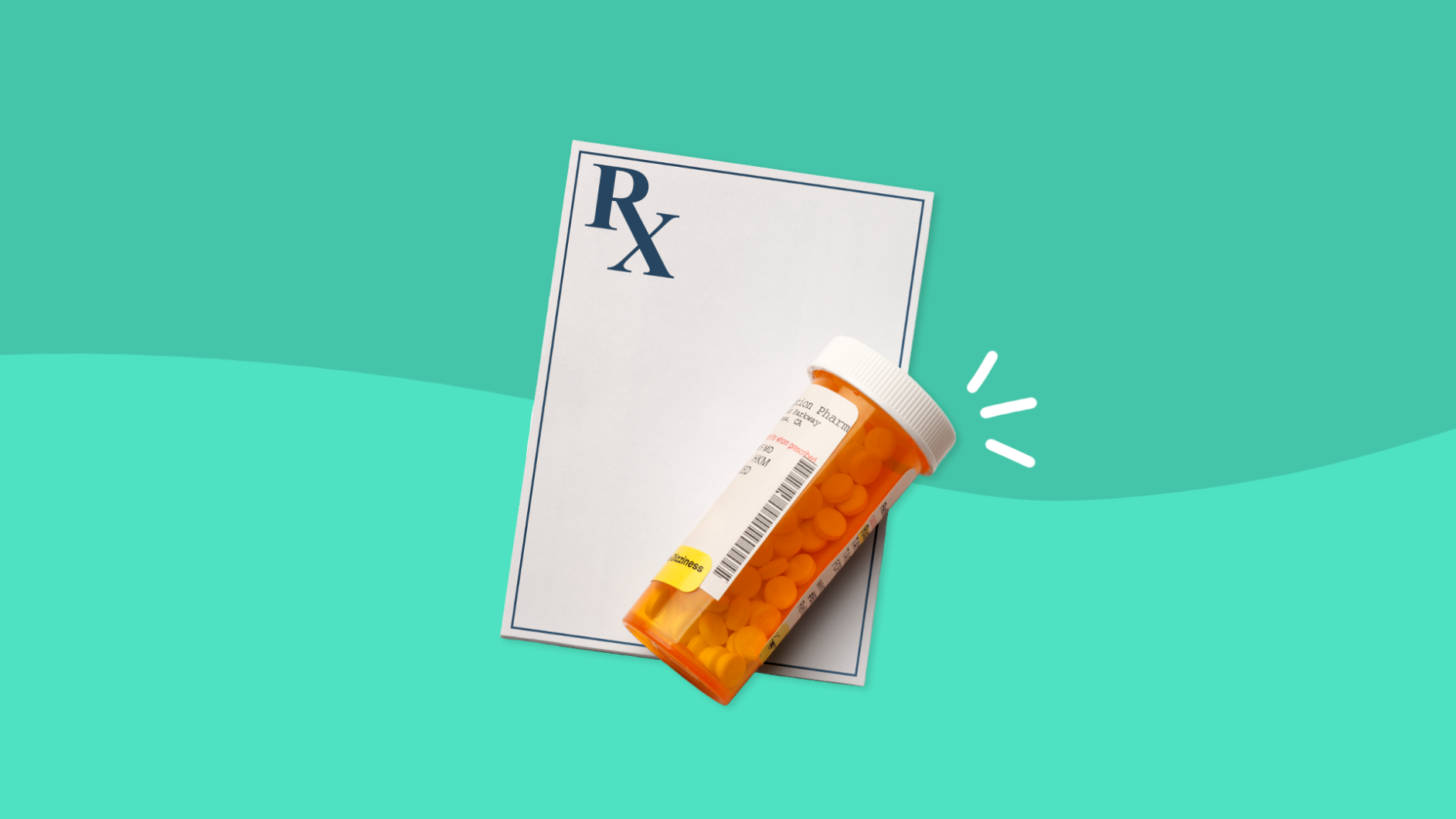Valsartan side effects | Serious side effects | How long do side effects last? | Warnings | Interactions | How to avoid side effects
Valsartan is a generic prescription drug used to treat high blood pressure, which lowers the risk of strokes and heart attacks. Valsartan can be used in people with chronic heart failure, to reduce hospitalizations. Valsartan also helps increase survival in people with left ventricular failure or left ventricular dysfunction after a heart attack. Belonging to a class of drugs called angiotensin II receptor blockers (ARBs), valsartan relaxes blood vessels to reduce blood pressure and increase blood flow.
Also available under the brand name, Diovan, valsartan is often used with other blood pressure or heart drugs, particularly hydrochlorothiazide, amlodipine, beta-blockers, or blood clot medications. Like all prescription drugs, valsartan can cause problems, so it’s important to review side effects, cautions, and drug interactions before taking this medication.
Common side effects of valsartan
Although many people do not usually experience side effects, valsartan’s most common side effects are:
- Dizziness
- Low blood pressure (hypotension)
- Diarrhea
- Joint pain
- Fatigue
- Symptoms of a viral infection
- Back pain
- Stomach pain
- High blood potassium (hyperkalemia)
- Cough
- Headache
Serious side effects of valsartan
The most serious side effects caused by valsartan include:
- Dangerously low blood pressure
- Dangerously high levels of potassium in the blood
- Kidney damage and kidney failure
- Low levels of neutrophils (a type of white blood cell)
- Low platelets
- Hepatitis
- Muscle damage
- Severe allergic reactions
Side effects may also vary based on the indication for which the drug is being taken. In clinical trials, 1 out of 10 people (10%) who took valsartan for heart failure, and 2.3% of people taking it for high blood pressure, stopped using the drug because of side effects.
How long do valsartan side effects last?
Most side effects such as low blood pressure, elevated blood potassium, and other temporary adverse effects will typically resolve when the medication is discontinued. Extremely low blood pressure or extremely high potassium levels may require emergency medical treatment, but with treatment, can be corrected in a few hours or days. Blood disorders (such as low platelets or low neutrophil counts) may need a few days of treatment. Kidney problems and severe muscle damage could become long-term, chronic medical conditions.
Valsartan contraindications & warnings
As with all prescription drugs, there are risks when taking valsartan. Because of underlying medical conditions, some people are at a higher risk for problems when taking valsartan.
Abuse and dependence
Valsartan does not cause dependence or cause withdrawal symptoms. However, valsartan is used to control blood pressure, so the sudden discontinuation of valsartan can cause blood pressure to rise to unhealthy levels. In people with heart failure or heart attack, this spike in blood pressure raises the risk of stroke or heart attack. Always talk to a doctor or healthcare provider before stopping this drug.
Overdose
Valsartan is not toxic, but the drug should always be taken as directed. Valsartan lowers blood pressure, so taking too much valsartan could result in dangerously low blood pressure. If blood pressure falls too low, circulatory collapse (shock) could result, a potentially lethal condition in which the circulatory system is not able to provide the body with enough oxygen.
Even if normal doses are taken, people taking valsartan should watch for symptoms of low blood pressure such as dizziness, problems concentrating, vision changes, fainting, and loss of consciousness. Severe hypotension will require immediate emergency treatment.
Restrictions
Valsartan is used in a wide range of people from children (6 years or older) to senior citizens. However, the drug may not be given to some people. Others may require extra caution and monitoring to avoid serious side effects.
When taking valsartan, watch for symptoms of rare but potentially serious hypersensitivity reactions such as rash, swelling around the face, lips, or tongue, trouble breathing, itching, or blisters. Get emergency medical help if you have any of these symptoms of an allergic reaction.
Valsartan has a black box warning, which is the strongest warning required by the FDA (U.S. Food and Drug Administration). Pregnant women should not take valsartan. The drug can harm a fetus, particularly the unborn baby’s kidneys, resulting in a higher rate of fetal or newborn death.
For breastfeeding, valsartan is present in breast milk and has not been determined as safe for infants. Breastfeeding is not recommended while taking valsartan. Nursing women will often be advised to switch to a different medication or discontinue breastfeeding.
When taking valsartan, your healthcare provider will order blood tests to determine how well the kidneys are working. The most important tests are blood urea nitrogen (BUN) and creatinine. High BUN or creatinine levels often indicate the kidneys are failing. Potassium levels will also need monitoring.
Seniors are commonly prescribed valsartan, but they may be more closely monitored for blood pressure, blood potassium, and kidney problems.
The FDA has approved valsartan for use in children as young as 6 years old to treat hypertension. Valsartan is not recommended for use in children younger than 6 years old.
Valsartan interactions
Two drugs are never used with valsartan because of the risk of low blood pressure, high blood potassium, or kidney damage:
- Aliskiren (in people with diabetes only)
- Isocarboxazid
Other types of drugs either avoided or used with caution in people taking valsartan include
- ACE inhibitors and ARBs such as irbesartan, losartan, enalapril, captopril, and lisinopril.
- Potassium-sparing diuretics like spironolactone.
- Taking potassium supplements, potassium drugs, or using potassium salt substitutes increases the risk of high potassium when taking valsartan.
- Aminoglycoside antibiotics treat bacterial infections but are toxic to the kidneys. Doctors generally avoid giving them with valsartan because of the risk of kidney damage.
- NSAIDs (nonsteroidal anti-inflammatory drugs): Taken for pain relief, NSAIDs can harm the kidneys when taken with valsartan.
- Platinum-based cancer drugs: Because they are toxic to the kidneys, combining certain cancer-fighting drugs with valsartan will require monitoring to make sure the combination does not decrease renal function.
- Lithium: The combination with valsartan increases the risk of kidney dysfunction and damage.
- Cyclosporine: An alternative to cyclosporine may be needed, or if not possible, close monitoring of kidney function and potassium is necessary.
- Antiviral drugs: Many antiviral drugs are toxic to the kidneys, so kidney function will need to be monitored when an antiviral drug is combined with valsartan.
- Tricyclic antidepressants, antipsychotics, alcohol, barbiturates, opioids, alpha-2 agonists, and erectile dysfunction medications: These medications, too, lower blood pressure, sometimes dramatically.
- Medications that raise blood pressure: As a side effect, some drugs raise blood pressure including include amphetamines, stimulants, ADHD medications, wakefulness agents, decongestants, corticosteroids, sympathomimetic drugs (like epinephrine), and migraine drugs (triptans).
How to avoid valsartan side effects
When taken for hypertension, valsartan has few and often minimal side effects. The risk of severe side effects is greater when valsartan is used to treat heart failure or heart problems immediately following a heart attack. There are ways, however, to help control or prevent side effects while maximizing the therapeutic benefits of valsartan.
1. Tell the doctor about all medical conditions
When talking to a doctor or healthcare professional, make sure the prescriber is aware of all your medical conditions, particularly:
- Liver problems
- Kidney problems
- Pregnancy or any pregnancy plans
- Breastfeeding an infant
2. Tell the doctor or pharmacist about all medications being taken
Many of valsartan’s side effects are worsened by interactions with other drugs. The prescriber and pharmacist should both know about all the medications currently being taken, even if they don’t seem important, especially:
- Blood pressure medications
- Heart medications
- Diuretics or “water pills”
- NSAIDs, including over-the-counter medications like aspirin
- Lithium
- Any drug, supplement, or multivitamin containing potassium
The best idea for visiting a doctor or healthcare professional is to keep a current list of all the medications being taken. Anytime a doctor is seen or a prescription filled, this list can help minimize the risk of adverse effects when taking medicines.
3. Take valsartan as directed
Follow all the directions on the prescription label or provided by a healthcare professional. Do not take more or less than prescribed unless you’ve consulted with a doctor or healthcare professional.
4. Avoid becoming dehydrated
High blood potassium and low blood pressure (hypotension) are two of the most common side effects of valsartan. At the extreme, both can quickly become a medical emergency. One way to avoid these side effects is to prevent dehydration, primarily by drinking enough fluids throughout the day. Now, many people taking valsartan may also be on a low-salt diet or a diuretic. Both increase the risk of dehydration, as does taking laxatives. In these cases, special care needs to be taken to avoid dehydration.
5. Watch for signs of low blood pressure
Lightheadedness, dizziness, and fainting are the most pronounced signs of low blood pressure. If they occur, talk to a doctor or other healthcare provider for advice.
6. Move slowly and carefully
Dizziness is the most common side effect of valsartan. Almost 1 in 6 people taking valsartan for blood pressure will experience dizziness at some point. To avoid dizziness, try standing up slowly from a sitting or lying down position. Make slow movements, especially when bending down or getting up. If you feel dizzy, sit or lie down to prevent falling. Sometimes, though, lying flat might make the spinning worse. Let the dizziness pass before attempting to get up.
7. Avoid NSAIDs
Popular pain-relievers such as aspirin and ibuprofen can harm the kidneys when taken with valsartan. Ask a doctor, pharmacist, or other healthcare professional about pain or fever relief alternatives, such as Tylenol (acetaminophen), when taking valsartan.
Resources:
- Angiotensin II receptor antagonists in the treatment of hypertension, American Family Physician
- Cardiac effects of opioid therapy, Pain Medicine
- Diovan prescribing information, U.S. National Library of Medicine
- Shock, StatPearls
- Valsartan, Epocrates
- Valsartan drug summary, Prescriber’s Desk Reference
- Valsartan prescribing information, U. S. National Library of Medicine
- Vertigo, StatPearls











